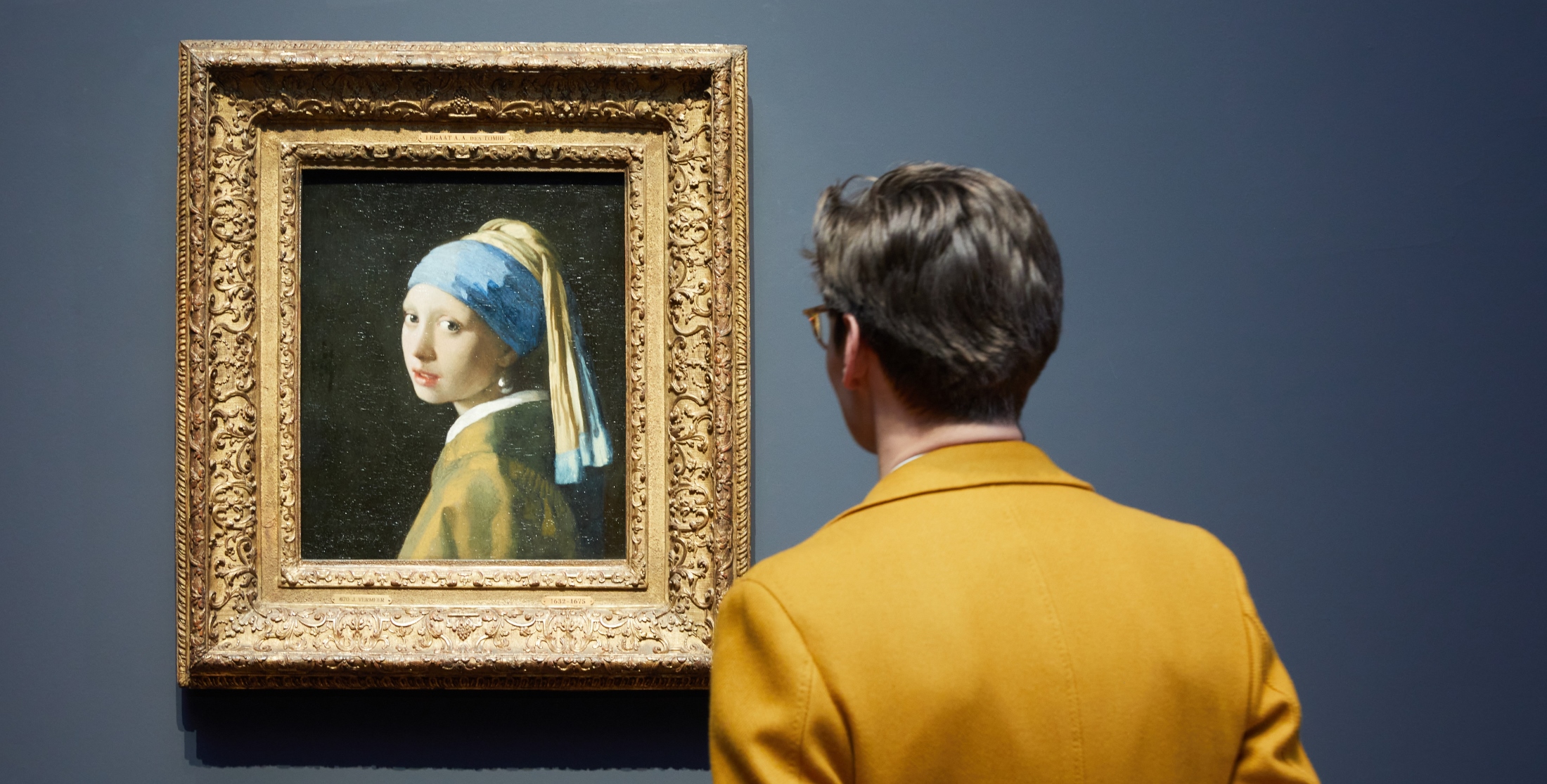
Major Vermeer show to open at the Rijksmuseum in Amsterdam
The largest retrospective of 17th-century Dutch painter Johannes Vermeer will be opening at the Rijksmuseum in Amsterdam next week. Around 28 of Vermeer’s known 35 paintings will be on display from February 10 until June 4, 2023.
Before you head to the exhibition, here is an overview of the Golden Age of Dutch art and Vermeer’s near-miraculous role in it.
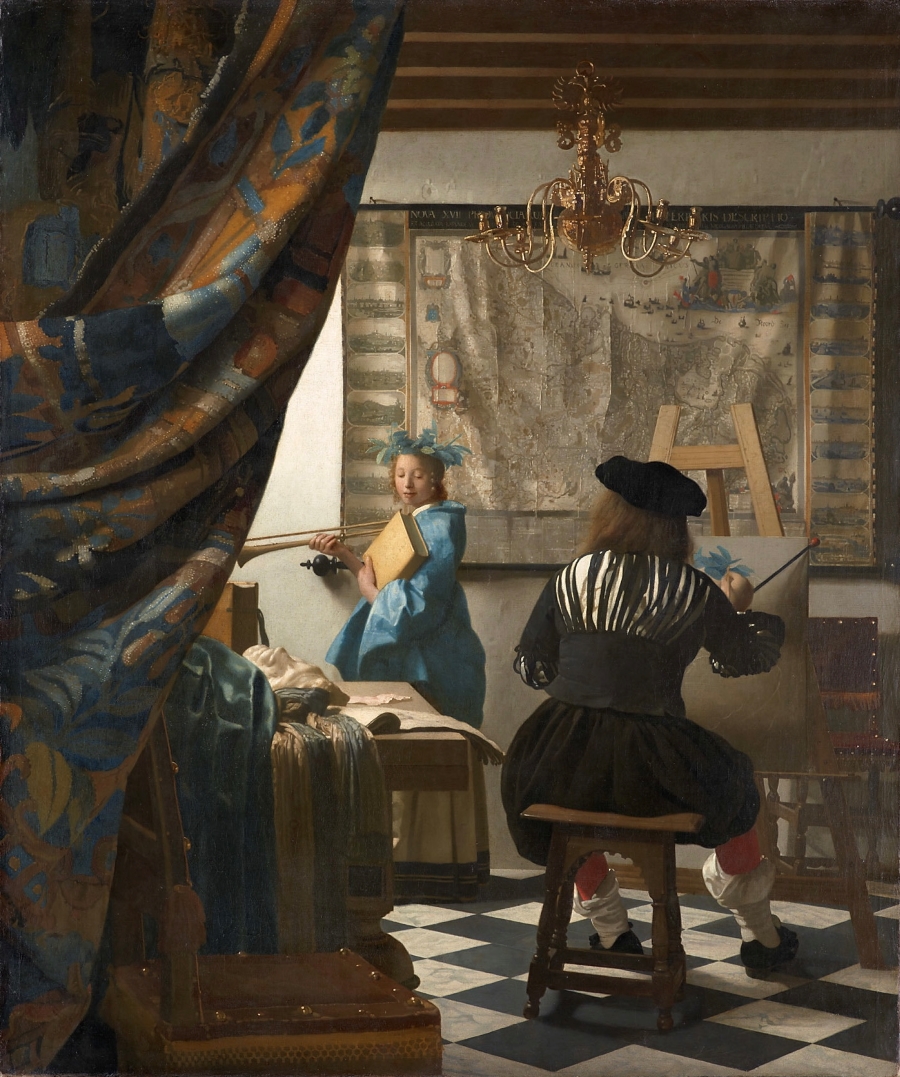 The Allegory of Painting, Johannes Vermeer, c. 1666. - Wikimedia Commons
The Allegory of Painting, Johannes Vermeer, c. 1666. - Wikimedia CommonsAn enigmatic painter
Dutch Baroque artist Johannes Vermeer (1632-1675) was born in Delft to a middle-class family, and his childhood home was located on Delft’s main square. Unfortunately, not so much is known about Vermeer’s childhood and youth before he got married in 1653. We also don’t know much about his art training.
One of Vermeer’s greatest inspirations is thought to have been the mysterious artist Jacob Vrel (circa 1630 - circa 1680) who is still relatively unknown. This year, his predecessor Vrel will also be honoured at the Mauritshuis in The Hague with a blockbuster big exhibition titled ‘Jacobus Vrel: Searching for Clues to an Enigmatic Artist’.
Researchers used to assume that Vrel was Vermeer’s follower, but recently it was discovered that it was actually the other way around. Amid Vrel’s calm and mysterious interior and street scenes, there are some visible parallels to Vermeer’s art, but there is no proof at the moment whether the artists were actually familiar with each other's works.
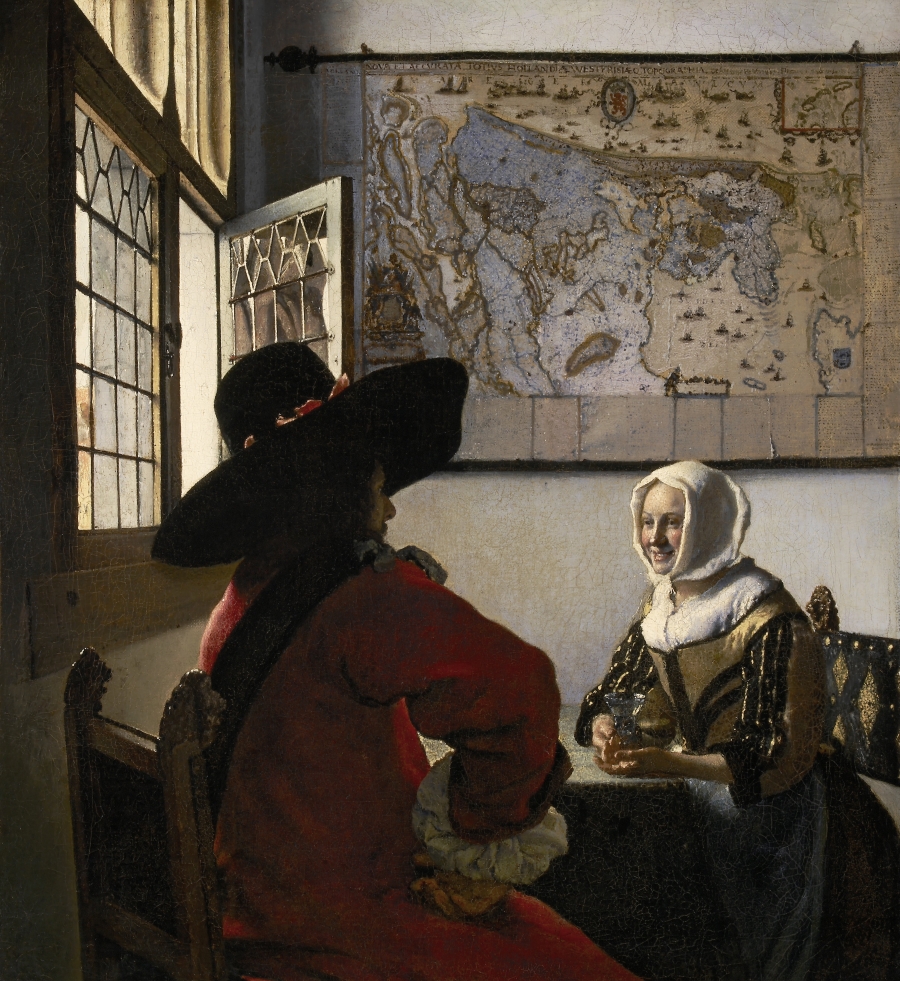 Officer and Laughing Girl, Johannes Vermeer, c. 1657. - Wikimedia Commons
Officer and Laughing Girl, Johannes Vermeer, c. 1657. - Wikimedia CommonsDutch Golden Age painting
In the Netherlands, the 17th century is known as the Dutch Golden Age. During the country’s unprecedented period of political, economical, and cultural glory, art flourished. Some of the most famous painters at the time included Rembrandt, Frans Hals, Pieter de Hooch, and Jacob van Ruisdael. From the 17th century up to modern artists, this period of Dutch art influenced many painters.
Interior scenes
One of the trends during this period was genre painting, which depicted daily activities, and in the Netherlands the main theme was particularly domestic, interior paintings. For Dutch painters, the interiors of the depicted places were independent environments often mirroring characters' feelings and intentions. This can be seen in the paintings of Pieter de Hooch or Jan Steen as well as in many of Vermeer’s paintings.
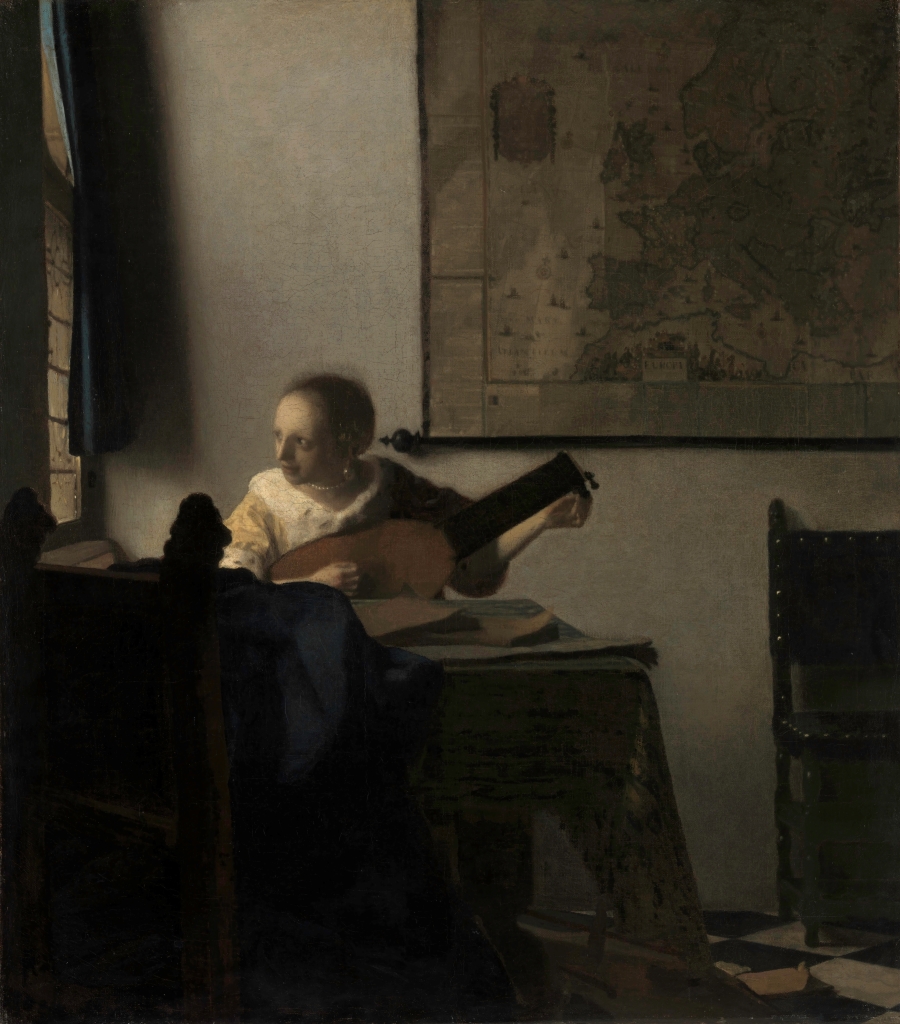 Woman with a Lute near a window, Johannes Vermeer, c. 1662-63. - Wikimedia Commons
Woman with a Lute near a window, Johannes Vermeer, c. 1662-63. - Wikimedia Commons
In ‘Young Woman with a Lute’ (1662-63) Vermeer created a dynamic and vivid composition, in which a young woman is playing the lute while looking out of the window, as if she is checking to see if anyone is listening to her music.
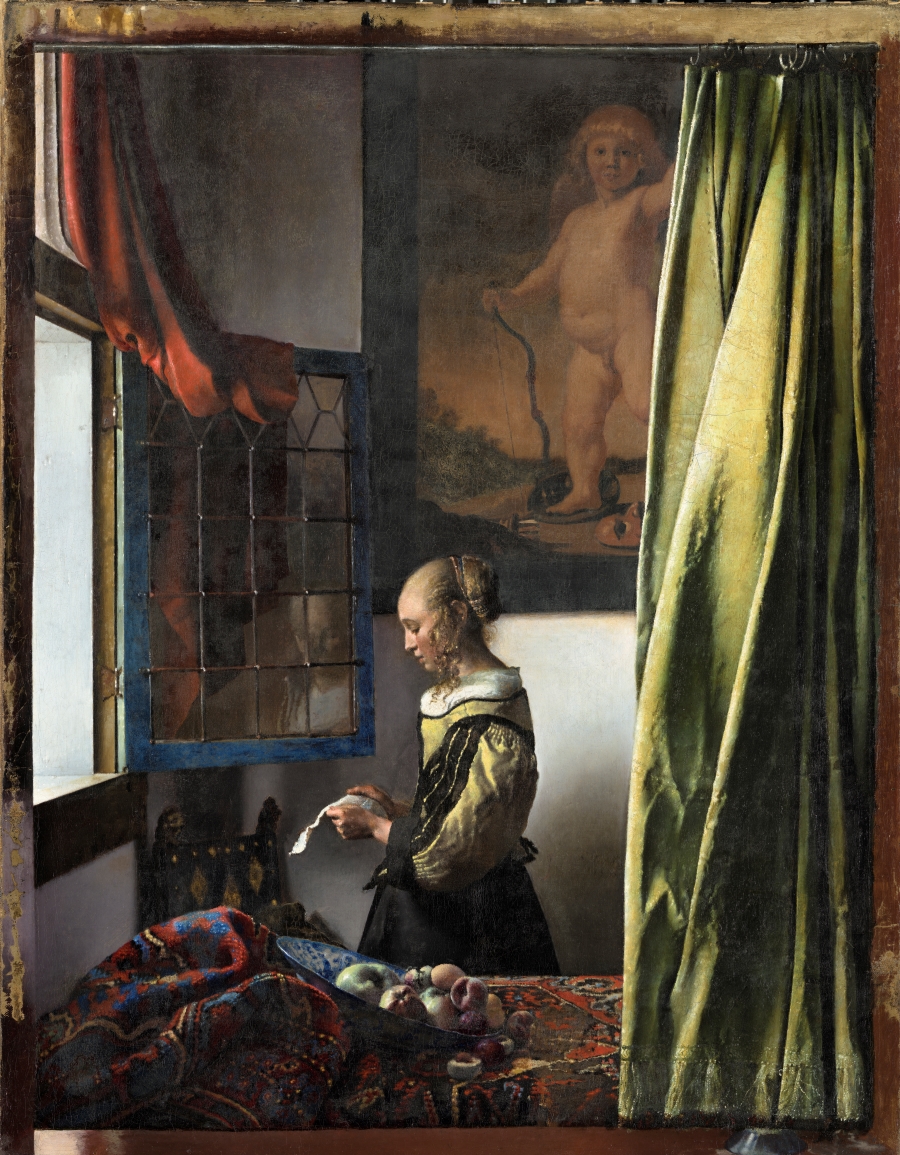 Girl Reading a Letter at an Open Window, Johannes Vermeer, 1657-58, oil on canvas. Gemäldegalerie Alte Meister, Dresden
Girl Reading a Letter at an Open Window, Johannes Vermeer, 1657-58, oil on canvas. Gemäldegalerie Alte Meister, Dresden
Painters who focused on interiors were mostly from Delft, just like Vermeer. But every one of them was searching for their original voice in art. Vermeer was fascinated by the psychological condition of the heroes in the time of their reflections or rest. ‘Girl Reading a Letter at an Open Window’ (1657-59) is one of Vermeer’s most mysterious paintings and shows the girl lost in her thoughts reading a letter near the window. We don't know who she is and who sent her this letter but it immerses us into a quiet, peaceful and reflective atmosphere.
 The Allegory of the Faith, Johannes Vermeer, c. 1670-72. - Wikimedia Commons
The Allegory of the Faith, Johannes Vermeer, c. 1670-72. - Wikimedia CommonsSymbols in Vermeer’s paintings
The often-spoken feature of Dutch art of the 17th-century is the symbols depicted in the paintings. For example, clothes worn by characters can tell us a lot about them. Many women in his paintings wear dull-coloured clothes as a symbol of their modesty. But in some of Vermeer's paintings, women are wearing vivid clothes and even drinking wine.
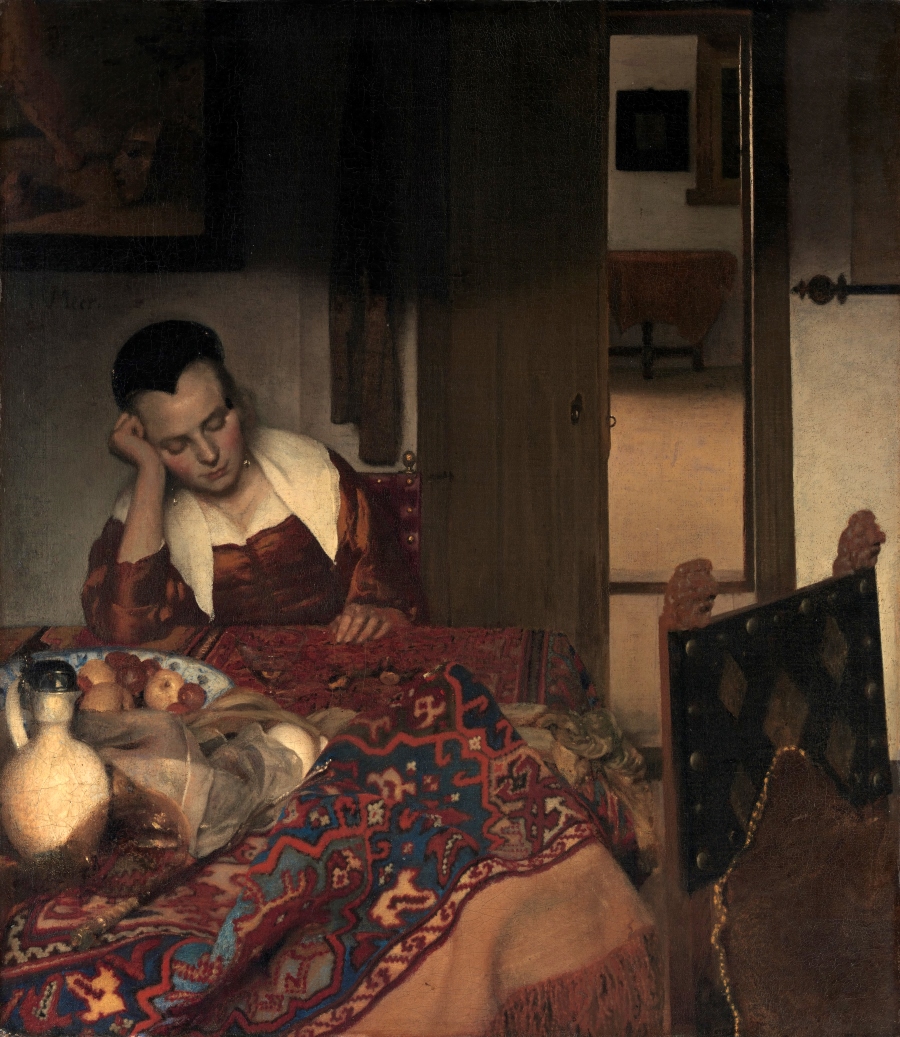 Young Woman Sleeping, Johannes Vermeer , c. 1656-57
Young Woman Sleeping, Johannes Vermeer , c. 1656-57
Vermeer is quite unconventional in the way he portrays female characters. For example, the sleeping woman in Dutch art often symbolises indolence. But in ‘Young woman sleeping’ (1657) he depicted her while she was resting without accusing her for being lazy.
The world of Vermeer’s characters is appealing because anyone from any epoch can imagine themselves in their place. Reading a letter in the silence of the morning house, playing the instruments and enjoying the music, calmly watching the world from the window, or having a minute of rest sitting at the table — he creates an inviting world which feels like home.
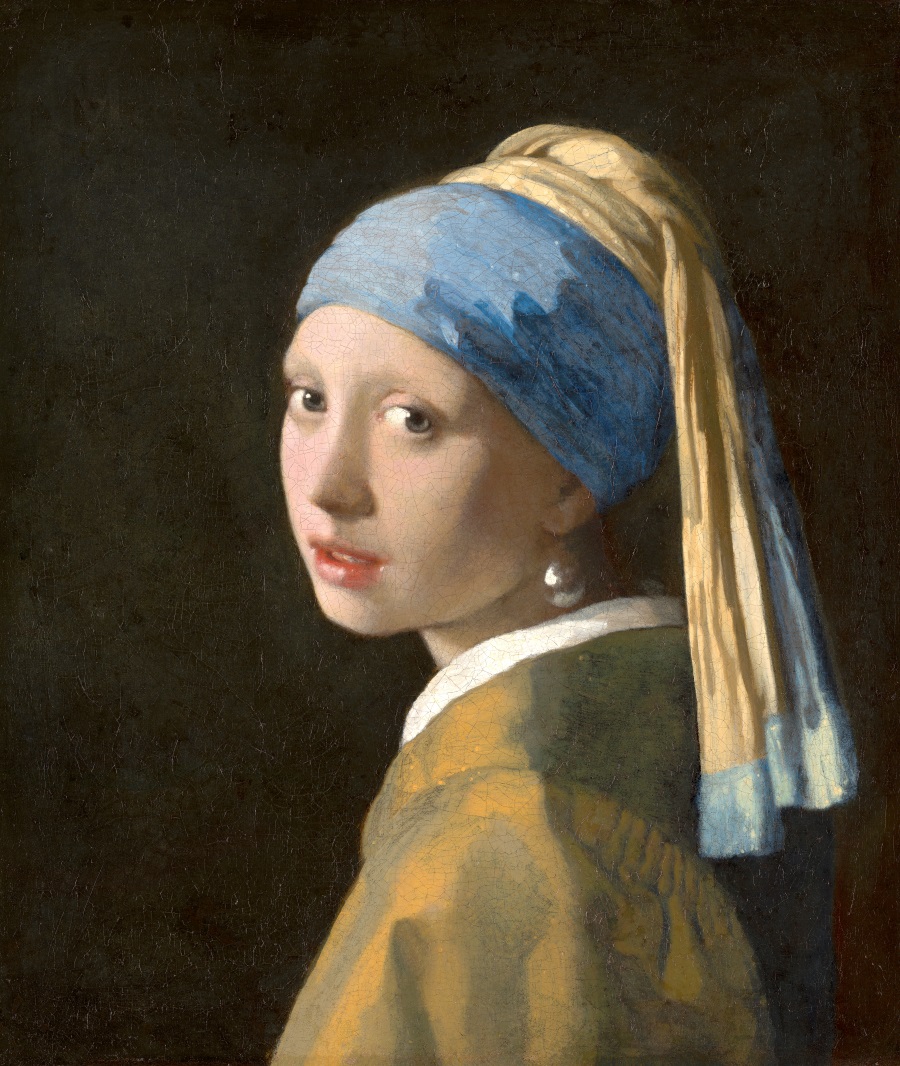 Girl with a Pearl Earring, 1664–67, oil on canvas. Mauritshuis, The Hague. Bequest of Arnoldus Andries des Tombe, The Hague
Girl with a Pearl Earring, 1664–67, oil on canvas. Mauritshuis, The Hague. Bequest of Arnoldus Andries des Tombe, The HagueHere is the list of the paintings that will be on display at the exhibition. One of Vermeer’s most famous paintings, ‘Girl with the Pearl Earring’, will only be on display until March 30.
A Lady Writing, 1664–67, National Gallery of Art, Washington
A Young Woman seated at a Virginal, c. 1670–72, The National Gallery, London
A Young Woman standing at a Virginal, 1670–72, The National Gallery, London
Allegory of the Catholic Faith, 1670–74, The Metropolitan Museum of Art, New York
Christ in the House of Mary and Martha, 1654–55, National Galleries of Scotland, Edinburgh
Diana and her Nymphs, 1655–56, Mauritshuis, The Hague
Girl Interrupted at Her Music, c. 1659–61, The Frick Collection, New York
Girl Reading a Letter at an Open Window, 1657-58, Gemäldegalerie Alte Meister, Dresden
Girl with a Flute, 1664–67, National Gallery of Art, Washington
Girl with a Pearl Earring, 1664–67, Mauritshuis, The Hague
Girl with the Red Hat, 1664–67, National Gallery of Art, Washington
Mistress and Maid, c. 1665–67, The Frick Collection, New York
Officer and Laughing Girl, 1657-58, The Frick Collection, New York
Saint Praxedis, 1655, Kufu Company Inc., The National Museum of Western Art, Tokyo
The Geographer, 1669, Städel Museum, Frankfurt am Main
The Glass of Wine, c. 1659-61, Staatliche Museen zu Berlin, Gemäldegalerie
The Lacemaker, 1666–68, Musée du Louvre, Paris
The Love Letter, 1669-70, Rijksmuseum, Amsterdam
The Milkmaid, 1658-59, Rijksmuseum, Amsterdam
The Procuress, 1656, Gemäldegalerie Alte Meister, Dresden
View of Delft, 1660-61, Mauritshuis, The Hague
View of Houses in Delft, known as ‘The Little Street’, 1658-59, Rijksmuseum, Amsterdam
Woman Holding a Balance, ca. 1662–64, National Gallery of Art, Washington
Woman in blue Reading a Letter, 1662-64, Rijksmuseum, Amsterdam
Woman with a Pearl Necklace, c. 1662-64, Staatliche Museen zu Berlin, Gemäldegalerie
Woman Writing a Letter, with her Maid, 1670–72, National Gallery of Ireland, Dublin
Young Woman Seated at a Virginal, c. 1670‐72, The Leiden Collection, New York
Young Woman with a Lute, 1662–64, The Metropolitan Museum of Art, New York
Delve into the work of other incredible artists and exhibitions, such as ‘Surrealism and Magic: Enchanted Modernity.’
Credits for the Main photo: Vermeer exhibition. Photo Rijksmuseum/ Henk Wildschut
